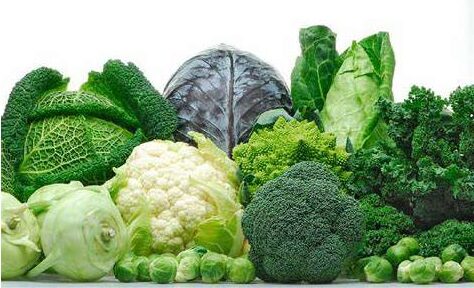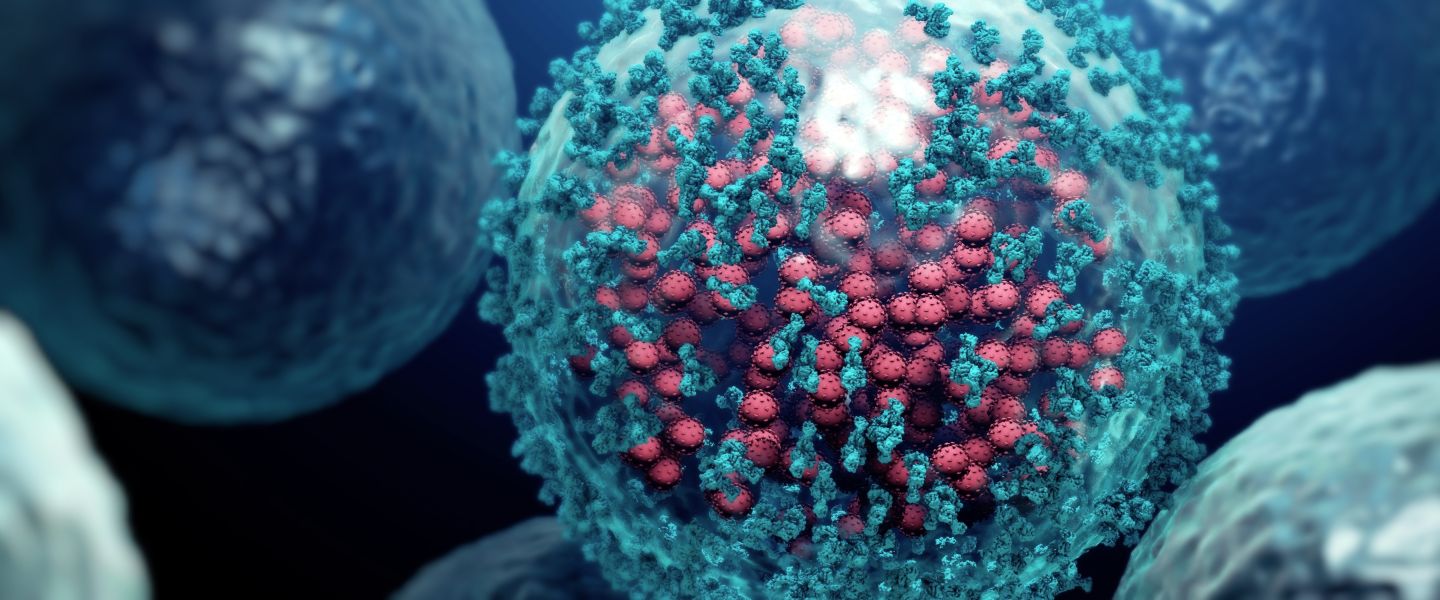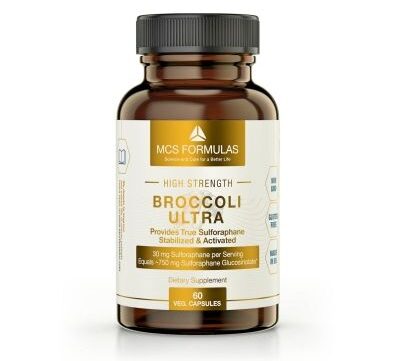SHARING / REPOSTING GUIDELINES: We're very happy to have posts/articles shared as direct links.
However, if you are replicating and re-posting information from this website or our posts, Abbey requests that you:
A) Only ever share articles in part (not in full). (eg. You can lift a paragraph as a way of introducing your readers to the topic) B) Be sure to always provide a direct link/URL back to the full original article here on the MyHealingCommunity.com website. Thanks in advance for your co-operation when sharing and re-posting any and all information that appears on this website.
Fighting Cancer with Your Dinner Plate
Cruciferous and brassica vegetables are well-known for their nutritional value and health benefits, including potential anticancer properties, heart-health benefits, and anti-inflammatory properties.
The term “cruciferous” is derived from the Latin word “Cruciferae,” which means “cross-bearing.” This name was chosen because the four petals of the plants in this family resemble a cross. Cruciferous vegetables are part of the Brassicaceae family and include a wide variety of vegetables, such as broccoli, cauliflower, cabbage, kale, Bok choy, arugula, and Brussels sprouts. They are known for their health benefits, including high levels of vitamins and fibre and compounds that may have anticancer properties.
"The term “brassica” is often used interchangeably with “cruciferous” when referring to these types of vegetables, although it technically refers to a subset of the cruciferous family." Sulforaphane is a naturally occurring compound found in cruciferous vegetables. It is particularly high in broccoli sprouts. Sulforaphane has been extensively studied for its potential anticancer benefits.
Sulforaphane is a naturally occurring compound found in cruciferous vegetables. It is particularly high in broccoli sprouts. Sulforaphane has been extensively studied for its potential anticancer benefits.
Ten anti-Cancer Reasons for Sulforaphane & Potential anti-cancer benefits of sulforaphane
1. Apoptosis: Sulforaphane may induce apoptosis, or programmed cell death, in various types of cancer cells. This can inhibit the growth and spread of cancer cells.
2. Cell Cycle Arrest: Sulforaphane has been found to disrupt the cell cycle in cancer cells, preventing them from dividing and growing.
3. Anti-inflammatory effects: Sulforaphane has powerful anti-inflammatory effects, which may help prevent the development of some forms of cancer associated with chronic inflammation.
4. Detoxification: Sulforaphane can stimulate the production of detoxifying enzymes, helping the body eliminate potential carcinogens.
5. Inhibition of Histone Deacetylase (HDAC): Sulforaphane has been found to inhibit histone deacetylase, an enzyme involved in cancer progression.
6. Antioxidant activity: By neutralizing harmful free radicals, the antioxidant activity of sulforaphane may help prevent cellular damage that can lead to cancer.
7. Inhibition of Helicobacter pylori: Sulforaphane has been shown to inhibit the growth of Helicobacter pylori, a bacterium associated with an increased risk of gastric cancer.
8. Angiogenesis and metastasis inhibition: Sulforaphane may inhibit the formation of new blood vessels that feed tumors (angiogenesis) and the spread of cancer cells to other parts of the body (metastasis).
9. Enhancement of radiotherapy: Some studies suggest that sulforaphane may enhance the efficacy of radiotherapy in cancer treatment.
10. Protective effects on normal cells: Sulforaphane may protect normal cells from the damaging effects of radiation and chemotherapy while enhancing the death of cancer cells.
To help find more ways to incorporate cruciferous/brassica vegetables into your diet, I recommend Brassicas: Cooking the World’s Healthiest Vegetables: Kale, Cauliflower, Broccoli, Brussels Sprouts and More by Laura B. Russell.
Dr. Daniel Thomas, DO, MS
Metabolic & Nutritional Medicine
Integrative Cancer Therapeutics
Mount Dora, Florida
Disclaimer: This information is for educational purposes only and not intended or implied to be personal medical advice.
Dr. Daniel Thomas recommends this cookbook....
Brassicas: Cooking the World’s Healthiest Vegetables: Kale, Cauliflower, Broccoli, Brussels Sprouts and More
by Laura B. Russell.
Healing Cancer Study Support Facebook Group Members:
Click here and login into Facebook to visit the Cancer Study Support Group conversation thread for exploring the anti-cancer research on cruciferous food compounds, including Sulforaphane, I3C, calcium-d-glucarate and DIM.Considerations if Choosing to Supplement Sulforaphane
Our body converts Glucosinolate, the Sulforaphane precursor to active Sulforaphane using an enzyme called Myrosinase, naturally found in cruciferous vegetables. During the seed selection, growth, farming, cooking and creation of supplements, the Myrosinase levels can be increased or decreased, affecting the Sulforaphane conversion.
Sulforaphane Dose/Serving Suggestions
When using a quality product with 325mg of Glucosinolate (with Myrosinase) the label will state that it creates around 15mg of bio-available Sulforaphane. The most common suggested daily serving of Sulforaphane is 15mg twice daily taken during meals.
Sulforaphane is an Anti-Fungal too!
Sulforaphane is an anti-Candida compound with antifungal and fungicidal activities. which also inhibits virulence factors (biofilm and hyphae growth) essential for the fungi’s ability to colonize and invade host tissues. Sulforaphane's potential to cross the blood-brain barrier indicates that sulforaphane alone could be used as an alternative therapy for both deep and superficial fungal infections.
* MCS offers ULTRAFAST WORLDWIDE SHIPPING with FedEx and UPS
** MCS are a SOCIAL ENTERPRISE - see the We Donate 50% program
References
Borgonetti, V., Governa, P., Manetti, F., Miraldi, E., Biagi, M., & Galeotti, N. (2021). A honokiol-enriched Magnolia officinalis Rehder & E.H. Wilson. bark extract possesses anxiolytic-like activity with neuroprotective effect through the modulation of CB1 receptor. The Journal of pharmacy and pharmacology, 73(9), 1161–1168. https://doi.org/10.1093/jpp/rgab067
Bai, X., Cerimele, F., Ushio-Fukai, M., Waqas, M., Campbell, P., Govindarajan, B., Der, C. J., Battle, T. E., Frank, D. A., Ye, K., Murad, E., Dubiel, W., Soff, G. A., & Arbiser, J. L. (2003). Honokiol, a Small Molecular Weight Natural Product, Inhibits Angiogenesis in Vitro and Tumor Growth in Vivo. Journal of Biological Chemistry, 278(37), 35501–35507. https://doi.org/10.1074/jbc.m302967200
Banik, K., Ranaware, A. M., Deshpande, V. S., Nalawade, S. P., Padmavathi, G., Bordoloi, D., Sailo, B. L., Shanmugam, M. K., Fan, L., Newsholme, P., Sethi, G., & Kunnumakkara, A. B. (2019). Honokiol for cancer therapeutics: A traditional medicine that can modulate multiple oncogenic targets. Pharmacological Research, 144, 192–209. https://doi.org/10.1016/j.phrs.2019.04.004
Cheng, X., Wang, F., Qiao, Y., Chen, T., Fan, L., Shen, X., Yu, D., Huang, Y., & Wei, M. (2023). Honokiol inhibits interleukin-induced angiogenesis in the NSCLC microenvironment through the NF-κB signaling pathway. Chemico-Biological Interactions, 370, 110295. https://doi.org/10.1016/j.cbi.2022.110295
Crane, C. A., Panner, A., Pieper, R. O., Arbiser, J. L., & Parsa, A. T. (2009). Honokiol-mediated Inhibition of PI3K/mTOR Pathway. Journal of Immunotherapy, 32(6), 585–592. https://doi.org/10.1097/cji.0b013e3181a8efe6
Eliaz, I., & Weil, E. (2020). Intravenous Honokiol in Drug-Resistant Cancer: Two Case Reports. Integrative cancer therapies, 19, 1534735420922615. https://doi.org/10.1177/1534735420922615
Khan, M. I., Khan, A., Zafar, S., Aslam, S., Khan, A., Shal, B., Haider, R., Din, F. U., & Khan, S. (2023). Anti-nociceptive effects of magnolol via inhibition of TRPV1/P2Y and TLR4/NF-κB signaling in a postoperative pain model. Life Sciences, 312, 121202. https://doi.org/10.1016/j.lfs.2022.121202
Li, Q., Ma, Y., Liu, X., Mu, L., He, B., Wu, K., & Sun, W. (2020). Anti‑proliferative effect of Honokiol on SW620'cells through up-regulating BMP7 expression via the TGF‑β1/p53 signaling pathway. Oncology Reports. https://doi.org/10.3892/or.2020.7745
Li, Z., Dong, H., Li, M., Wu, Y., Liu, Y., Zhao, Y., Chen, X., & Ma, M. (2017). Honokiol induces autophagy and apoptosis of osteosarcoma through PI3K/Akt/mTOR signaling pathway. Molecular Medicine Reports. https://doi.org/10.3892/mmr.2017.8123
Lin, S. Y., Liu, J. D., Chang, H. C., Yeh, S. D., Lin, C. H., & Lee, W. S. (2002). Magnolol suppresses proliferation of cultured human colon and liver cancer cells by inhibiting DNA synthesis and activating apoptosis. Journal of cellular biochemistry, 84(3), 532–544. https://pubmed.ncbi.nlm.nih.gov/24147344/
Liu, A., Xun, S., Zhou, G., Zhang, Y., & Lin, L. (2023). Honokiol alleviates sepsis-associated cardiac dysfunction via attenuating inflammation, apoptosis and oxidative stress. Journal of Pharmacy and Pharmacology, 75(3), 397–406. https://doi.org/10.1093/jpp/rgac102
Liu, H., Zang, C., Emde, A., Planas-Silva, M. D., Rosche, M., Kühnl, A., Schulz, C., Elstner, E., Possinger, K., & Eucker, J. (2008). Anti-tumour effect of Honokiol alone and in combination with other anti-cancer agents in breast cancer. European Journal of Pharmacology, 591(1–3), 43–51. https://doi.org/10.1016/j.ejphar.2008.06.026
Ong, C. P., Lee, W. L., Tang, Y., & Yap, W. H. (2019). Honokiol: A Review of Its Anti-cancer Potential and Mechanisms. Cancers, 12(1), 48. https://doi.org/10.3390/cancers12010048
Ponnurangam, S., Mammen, J. M., Ramalingam, S., He, Z., Zhang, Y., Umar, S., Subramaniam, D., & Anant, S. (2012). Honokiol in Combination with Radiation Targets Notch Signaling to Inhibit Colon Cancer Stem Cells. Molecular Cancer Therapeutics, 11(4), 963–972. https://doi.org/10.1158/1535-7163.mct-11-0999
Schang, L. M. (n.d.). Honokiol Inhibits SARS-CoV-2 Replication in Cell Culture at a Post-Entry Step | Microbiology Spectrum. Microbiology Spectrum. https://journals.asm.org/doi/full/10.1128/spectrum.03273-22
Silva BLR, Simão G, Campos CDL, et al. In Silico and In Vitro Analysis of Sulforaphane Anti-Candida Activity. Antibiotics (Basel). 2022;11(12):1842. Published 2022 Dec 19. doi:10.3390/antibiotics11121842
Wang, X., Liu, Q., Fu, Y., Ding, R., Qi, X., Zhou, X., Sun, Z., & Bao, J. (2022). Magnolol as a Potential Anti-cancer Agent: A Proposed Mechanistic Insight. Molecules, 27(19), 6441. https://doi.org/10.3390/molecules27196441
Xu, T., Wenyue, T., Zhang, Q., J, L., Liu, Z., Jin, J., Guo, Y., & Bai, L. (2021). Novel 1,3,4-thiadiazole/oxadiazole-linked honokiol derivatives suppress cancer via inducing PI3K/Akt/mTOR-dependent autophagy. Bioorganic Chemistry, 115, 105257. https://doi.org/10.1016/j.bioorg.2021.105257
Yi, X., Qi, M., Huang, M., Zhou, S., & Xiong, J. (2022). Honokiol Inhibits HIF-1α-Mediated Glycolysis to Halt Breast Cancer Growth. Frontiers in pharmacology, 13, 796763. https://doi.org/10.3389/fphar.2022.796763
Zhou, Y., Bi, Y., Yang, C., Yang, J., Jiang, Y., Meng, F., Yu, B., Khan, M., Ma, T., & Yang, H. (2013). Magnolol induces apoptosis in MCF-7 human breast cancer cells through G2/M phase arrest and caspase-independent pathway. Die Pharmazie, 68(9), 755–762. https://pubmed.ncbi.nlm.nih.gov/24147344/
Zhang, F., Ren, H., Shen, J., Zhang, X., Ye, H., & Shen, D. (2017). Magnolol suppresses the proliferation and invasion of cholangiocarcinoma cells by inhibiting the NF-κB signalling pathway. Biomedicine & Pharmacotherapy, 94, 474–480. https://doi.org/10.1016/j.biopha.2017.07.085
Zhao, M., Zheng, Y. H., Zhao, Q. Y., Zheng, W., Yang, J. H., Pei, H. Y., Liu, L., Liu, K. J., Xue, L. L., Deng, D. X., Wang, L., Ma, X., Fu, S. H., Peng, A. H., Tang, M. H., Luo, Y. Z., Ye, H. Y., & Chen, L. J. (2021). Synthesis and evaluation of new compounds bearing 3-(4-aminopiperidin-1-yl)methyl magnolol scaffold as anti-cancer agents for the treatment of non-small cell lung cancer via targeting autophagy. European journal of medicinal chemistry, 209, 112922. https://doi.org/10.1016/j.ejmech.2020.112922
DISCLAIMER: Any and all information in this post was gathered from published research in cell lines or animals, or from typical clinical use. It may not be complete, may not have not been verified in humans, and is NOT meant or given as medical advice, but only as a guide to further exploration.








